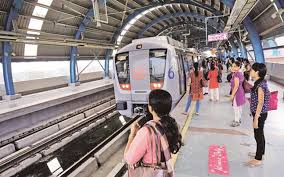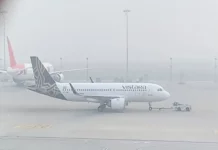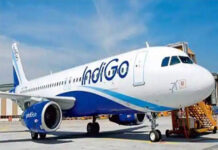 New Delhi: The daily average ridership of the Delhi Metro was targeted to reach 30 lakh in 2017-18, but it dipped to 25.7 lakh, till December, the city government said in the first Outcome Budget tabled in the Assembly.
New Delhi: The daily average ridership of the Delhi Metro was targeted to reach 30 lakh in 2017-18, but it dipped to 25.7 lakh, till December, the city government said in the first Outcome Budget tabled in the Assembly.
The ridership of the mass rapid transit system had significantly dipped in December, in the wake of its second hike in fare.
However, the figures improved in January and February this year, with ridership of 26.85 lakh and 26.98 lakh respectively, the transporter had recently said.
“The daily ridership of Delhi Metro which was 28 lakhs in 2016-17 and was targeted to reach 30 lakh in 2017-18, actually reduced to 25.7 lakh,” according to the Outcome Budget.
This was among the major critical indicators enunciated by Deputy Chief Minister Manish Sisodia while presenting it in the House during the ongoing session.
The Outcome Budget breaks down the performance of each major scheme and program of the Delhi government into two kinds of indicators: Output indicators, which tell us what are the services or infrastructure that government departments are required to be provided; and Outcome indicators, which tell exactly how did the people benefit from that scheme, he said.
“Our government has decided that if the purpose of the Outcome Budgeting is to ensure accountability in government expenditure, then we must communicate to the Hon’ble members of this august House, a detailed status of achievements up to December 2017, against Outcome Budget 2017-18, before proposing the next year’s budget,” Sisodia said.
The metro’s ridership is generally low in December and January every year because of the holiday season. The same trend could be observed this year also. However, despite the holiday season, January registered a better ridership than the preceding month, the DMRC had earlier said.
“In December, the Delhi Metro network expanded by 12.94 km with the opening of the Botanical Garden Kalkaji Mandir section (of the Magenta Line). The average daily ridership of this newly opened section was about 45,000 in January 2018.
“In addition to this, about 24,000 more commuters travelled by the metro everyday in January in comparison to December 2017. In February 2018, about 49,000 passengers travelled by the Magenta Line everyday which again indicates that in the rest of the corridors, there was an increase of over 30,000 everyday,” the DMRC said.
The total operational span of the Delhi Metro network will expand to over 350 km after completion of its Phase-III project, which would also enhance the daily average ridership of the mass rapid transit system to nearly 40 lakh, according to the latest economic survey of the city released on March 19.
Currently, after opening of a stretch each on the Magenta and Pink Lines, the operational length of the Delhi Metro stands at 252 km.-PT






